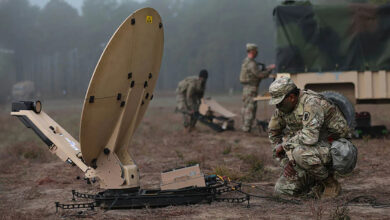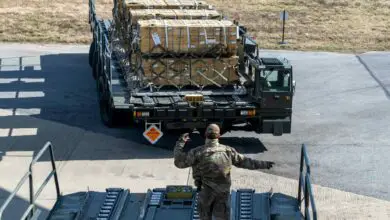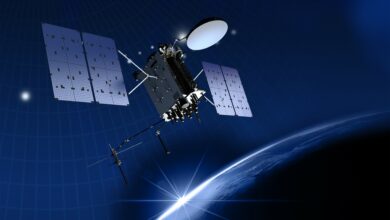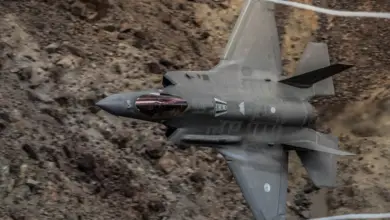US Space Force Moves Ahead With Ground Tracking Project
The US Space Force will wrap up its review of a space-based sensors system to track ground targets in the spring, a top official revealed.
The service will request funds for the ground moving target indicator (GMTI) in 2024, added the Space Force’s Chief of Space Operations Gen. John Raymond.
Citing Raymond, C4ISRNET wrote that the service’s “design hub — the Space Warfighting Analysis Center” — in conjunction with the Pentagon — has been studying the GMTI option “that is complementary to what other agencies provide.”
Other Agencies Using Satellite Data
Satellite-based intelligence gathering has traditionally been the domain of the intelligence community. The National Reconnaissance Office (NRO) uses a fleet of spy satellites to gather imagery and send it to the National Geospatial-Intelligence Agency for processing and analysis.
The NRO also buys intelligence, surveillance, and reconnaissance data from commercial satellite providers. However, the circuitous route of information gathering, processing, and dispatch makes it unviable for situations where instant information is required.
Raymond hinted earlier this year that the proliferation of smaller and commercially viable imagery satellites has opened a window for the service to use them for tactical purposes such as providing beyond-line-of-sight communications to warfighters.
Tactical Satellites
“I do think as technology has allowed for smaller satellites to be more operationally relevant and you can do so at a price point that is cheaper, that there is a role for operational level tactical satellites as you described and that the Space Force would have a role in that,” Raymond was quoted as saying earlier this year.
“Again, it’s early in the study efforts, if you will, and whatever we do we’ll make sure that we do it in close partnership with our intelligence partners because what we don’t want to do is duplicate efforts,” he continued. “We want to save dollars and reduce taxpayer dollars, not duplicate.”
Raymond disclosed the project in May, revealing that the service had been secretly pursuing the use of radar satellites to track ground targets since 2018, aiming to deploy the system before the US Air Force-operated fleet of Joint Surveillance Target Attack Radar System (JSTARS) retires.
Replacement for JSTARS
The US Air Force currently uses over a dozen Northrop Grumman JSTARS aircraft to track ground targets, photograph them, and relay the photos “via secure data links with air force command posts, army mobile ground stations, and centers of military analysis far from the point of conflict,” wrote Air Force Technology.
The crewed Boeing 707-300-based aircraft has been in service since 1991 and is vulnerable to enemy air defense systems.
According to the service, the space-based system will have greater range than the JSTARS and be able to operate in contested environments.
Space Force spokesperson Col. Catie Hague told Breaking Defense that “the space-based GMTI system will replace a portion of the JSTARS sensing capability” and “will support all combatant commands.”
“Space-based GMTI will provide another way to harness data from the space domain and incorporate it into the secure cloud environment underpinning the Advanced Battle Management System to sense, make sense, and act faster than our adversaries.”











